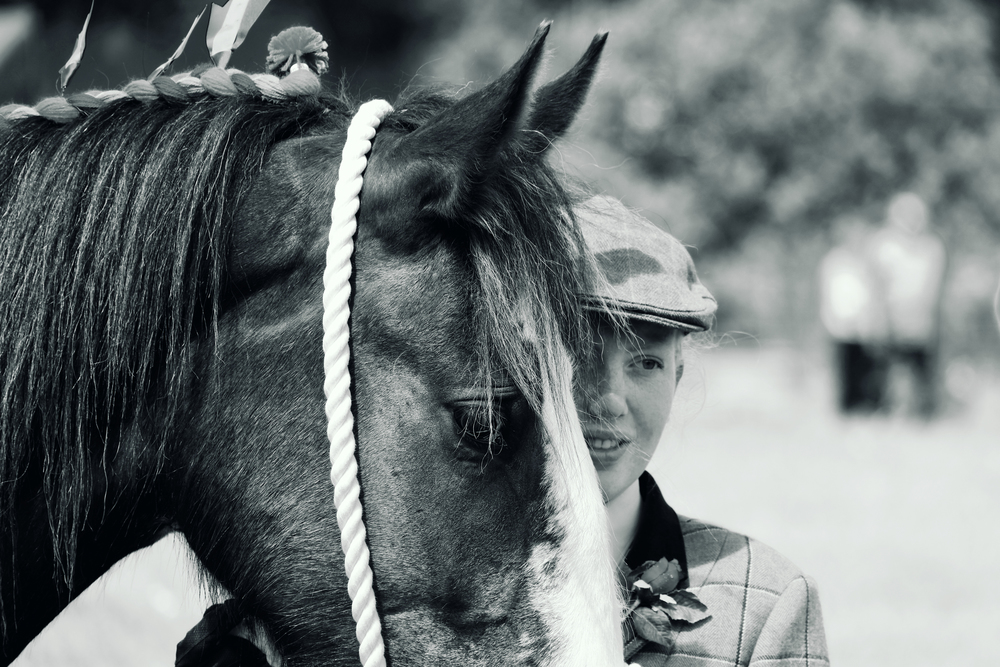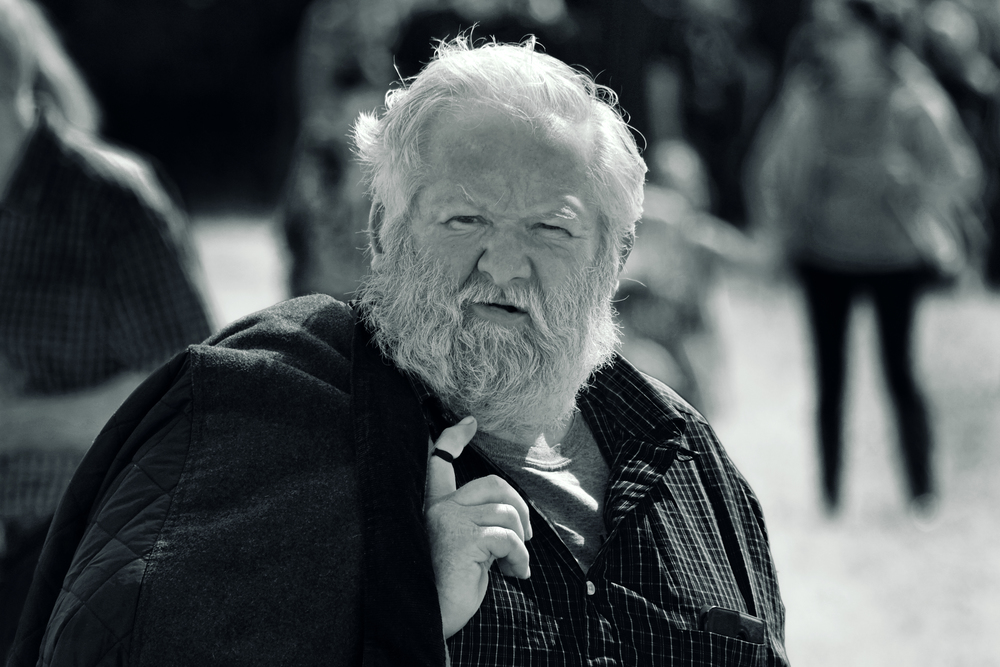Those of you who have followed my scribbles for any length of time will readily recognise that I have a few, shall we say, personal foibles that surface from time to time. My preference for an OVF and the rangefinder form factor, for example, and my aversion to screens that tilt and respond to touch.

One of my longest lasting and most practical pecadillos is an aversion to lugging around any more than I have to. It was with this in mind that at the weekend I went to the Cranleigh Show in leafy Surrey. The show has been running now for some seventy years and in many respects is a delightful anachronism. It is a country show that still places the emphasis upon the livestock and agriculture—not on “country clothing”, hot-tubs and assorted “rural lifestyle” accessories for urban escapees. As such it is a great place for people-watching and for candid portraiture. There is a real feeling of permanence about an event like this and the bedrock is the people who attend both as spectators and as organisers, competitors and judges.
Exceptional
I took with me my by-now trusty XPro2 and paired it with the exceptional 35mm f/2 and the Fujinon 50-230mm XC. I have written of this latter before; until the advent of the 100-400mm it was the lens with the longest reach in the Fujinon stable whilst at the same time being one of the lightest and cheapest due to its XC designation. Intended to form part of a twin-zoom set for the cheaper Fuji bodies, the 50-230 is nevertheless a solid and reliable performer.
More than that, even though I am fortunate enough to have the 100-400, that can hardly be classed as a “take everywhere” lens. When it is on your camera or on your shoulder you know about it. Taking it anywhere is akin to lugging a small infant around; it attracts comment, you must be careful not to drop it, you must be wary of its location at all times and if not kept in check it can wreak havoc in small shops, on public transport and other confined spaces.
The XC 50-230 on the other hand is so small, so light, that you would almost forget it was with you. On this occasion I was specifically going in search of portrait shots and I knew that it could be hard to get at the people I particularly wanted to shoot—not because they are particularly camera-shy but more because they are not only busy but spend their time standing in a show ring, with me on the outside. The 90 would have been a good choice, of course, but given the distance dilemma and the unusually (for England in June) sunny weather, the 50-230 was my lens du jour.
Monochrome
These are the results. I make no apology for them being presented here in monochrome; that’s my aesthetic choice given the subject matter which mostly consists of craggy gentlemen who have worked the fields all their lives; I think mono suits them well. Note, incidentally, the tweed suits and Tattersall-check shirts that many are sporting. This is quite a narrow demographic and there is a definite “uniform”. It’s not something that the nouveau rural can just go and buy, either; some of those suits will have been handed down from elderly male relatives and the corduroy trousers are worn in by letting the gun dogs sleep on them in the barn for a season or two.
Most of the subjects of these photos are judges of the various livestock classes. They are ideal, because they are both photogenic and prone to standing stock (geddit?) still for long periods of time while perusing a fetlock. The relative slowness of the 50-230 was not a hindrance, while its lack of weight and girth meant that I could both hold it to my eye for long periods of time and not look like I was aiming an RPG. The slow maximum aperture was not an issue either due both to the well-lit conditions and the relatively distant backgrounds which even an f/6.7 aperture could render attractively defocused.
And this is the theme of this short piece; I have said it before but, with Summer holidays fast approaching I’ll say it again. Do yourself a favour and find a corner of the gadget bag for the XC 50-230, even—or especially—if you have the 100-400. It really is a grand touring lens with performance—especially on a sunny day—that belies its price and modest design parameters.
You know it makes sense!
_______________
-
You can find more from Bill Palmer at Lightmancer
- Subscribe to Macfilos for free updates on articles as they are published. Read more here
- Want to make a comment on this article but having problems? Please read this







Immensely engaging portraits! Would be interesting to know what length you were using. Fairly short? ( judging from the bokeh.)
Thank you kindly, John. Actually it’s the other way around – most were at the 230mm end or thereabouts. Although the show rings are quite small (20-30 feet across) I wanted to frame tightly. What really helped the bokeh was that the backgrounds were for the most part another 10-20 feet back from my subject. Even at a pedestrian f6.7 this gave enough separation to result in a pleasing out of focus effect.
I should have said that I was a member of the Royal Dublin Society (RDS). They are the body that host the Dublin Horse Show each year.
William
Nice Photos Bill. I might grab one of these lenses for the Dublin Horse Show. I am not a telephoto person nowadays and something cheap and light would do the trick as I would not be using the lens very much. The best part of the show is the judging and the various characters involved with bowler hats, tweeds and badges. I will send you some examples by PM.
I love the tweeds and bowlers. When I was in school many years ago, our teacher used to refer to such people as ‘Horse Show Types’ . He used to wonder idly where they went for the other months of the year as he would only see such people at the Horse Show.
I attend the Horse Show now as I get a free ticket as a member of the Royal Dublin Horse Show. My two daughters have been interested in riding and jumping horses on and off over the years and my younger daughter is still involved, but I never caught the bug myself. In Ireland you are never more than two fields away from a horse and my cousin is a well known horse trainer (and breeder) here – he trained the winner of the Grand National in 2003. So if I see horse racing on the TV, I will always stand/sit and watch. I am not tempted generally, however, to make any bookmakers richer than they already are.
As for the lens, it is clearly more than adequate for what I need for my once or twice a year equine photography.
William
Thank you kindly for your thoughts, William. The thing about the 50-230 is that it is built to a price but performs well above what one might expect for the money. Fuji seems incapable of producing a really bad lens – oh sure, there are some that could do with an update, but overall the range is solid.
As I get older, I find the appeal for events such as these lies more in the people than the activities. You are absolutely right – there is a demographic for these things that only seems to appear when something is on! I’d be very interested to see your shots – do please share when you get a chance.